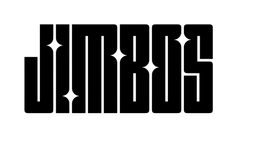Compound vs Polish: The Ultimate Guide to Paint Correction Products
Whether you're a weekend warrior or a pro with years of experience, understanding the difference between compounds and polishes is key to correcting paint safely and effectively.
This post covers everything I’ve learned while developing Picture Perfect Polish—including what no one else talks about. We’ll explore abrasives, oil systems, pad choice, one-step vs two-step processes, and how to choose what works best for your car, your tools, and your goals.
What Is a Compound?
Compounds are abrasive products designed to remove heavy defects from paint—swirls, oxidation, water spots, sanding marks. They use more aggressive abrasives and are often paired with cutting pads to level the clear coat quickly.
What Is a Polish?
Polishes are less aggressive than compounds. They're used to refine the finish, remove light defects, and boost gloss. Many modern “polishes” actually offer light-to-moderate correction depending on how you use them.
The Gray Area: Why It’s Not Always Black and White
The truth? The line between polish and compound has blurred. Some polishes cut like compounds. Some compounds finish better than old-school polishes. That’s why pad choice, abrasive type, and oil content matter more than the label.
Key Concepts Explained
- Diminishing vs Non-Diminishing Abrasives: How they behave while you work
- Oil Content: Impacts dusting, work time, wipe-off, and clarity
- Pad Selection: Controls how aggressive or gentle your correction is
- One-Step vs Two-Step: How to know when each method is right
How Picture Perfect Polish Fits In
I created Picture Perfect Polish to bridge the gap. It’s not just a polish. It’s a hybrid formula that cuts like a compound but finishes like a polish—without dusting, streaking, or complicated wipe-off.
One Product. Endless Correction Options.
- Hybrid diminishing abrasive system
- Pad-dependent formula: compound or polish in one
- No dust. Long work time. Easy wipe-off.
Save time, simplify your process, and get professional results with less effort.
Related Posts from the Compound vs Polish Lab
- Compound vs Polish: What’s the Difference?
- Diminishing vs Non-Diminishing Abrasives
- How Polish Oils Affect Correction
- Pad Choice for Polishing vs Compounding
- One-Step Polish vs Two-Step Correction



